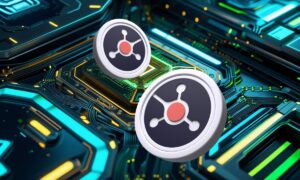In the first of three articles on Web 3.0 Sophie Guibaud, Co-founder and Chief Commercial and Growth Officer at Fiat Republic, discusses how the masses will benefit from decentralisation.
With the technological landscape constantly shifting, it can be difficult to define what era of technology we are in. One way of doing this is to look at the evolution of the World Wide Web (the internet) and use this as a marker in the sand to define how technology is influencing society. Web 1.0, the first iteration of the internet, was a powerful new tool introduced in the nineties. It completely revolutionised the way in which we communicate and share information but, at its core, it was very much a digital replica of real world governance, under the control of a few central powers rather than being fully democratised.
Web 2.0, the second generation of the World Wide Web, was a huge shift from static web pages to dynamic, interactive, and collaborative web applications. This shift was driven by the development of new technologies, which made it easier for developers to create interactive and user-friendly web applications, and for users to share their own user-generated content. Social media was a core element of Web 2.0, allowing the proliferation and validation of user-generated content, as well as championing the freedom of speech and expression. However, there have been a number of data leaks which have shown that the underlying mechanisms are similar to Web 1.0; many of these platforms are built upon profit-first business models that stifled any true democracy. One high profile example of this was the Cambridge Analytica scandal, in which the personal data of millions of Facebook users was collected without their consent to be used by political advertisers. The rapid globalisation of Web 2.0 also presented other challenges, including the spread of misinformation and online abuse.
We now live with a “Web 2.5”; a new generation of the internet allowing for the seamless integration of crypto and fiat currencies in various online platforms. One of the main goals of Web 2.5 is to make it easier for people to use cryptocurrency in their daily lives, and to facilitate the adoption of crypto by mainstream consumers, by allowing them to easily buy crypto with their fiat. This unlocks more financial freedom for consumers; those who are “unbanked” are able to access a financial system, and those who use crypto such as bitcoin are able to take advantage of the inflationary mechanisms built into the technology because it has a finite supply, whereas governments are free to print money as they see fit.
The freedoms afforded by Web 2.5 are achieved through the development of new technologies and protocols that enable the use of crypto in a variety of different contexts, such as online shopping, peer-to-peer payments, and more. Web 2.5 is an important step in the evolution of the internet and the financial system.
Beyond finance, the emergence of Web 2.5, and the move towards Web 3.0, is expected to bring about a more decentralised, secure, and transparent web. With decentralised applications and other protocols, users will have more control over their own data and be able to enter into complex agreements without intermediaries. This should create a more efficient and democratised internet, where users are able to reap the benefits of their own data and are not at the mercy of organisations that collect, sell, and sometimes abuse this data. Of course, this technology is still in its infancy and faces challenges; both externally from the regulators and internally from the limitations of existing technology but, as we move fully towards a Web 3.0, the masses will truly be able to reap the benefits of decentralisation. We’ll explore this more in parts two and three…



































